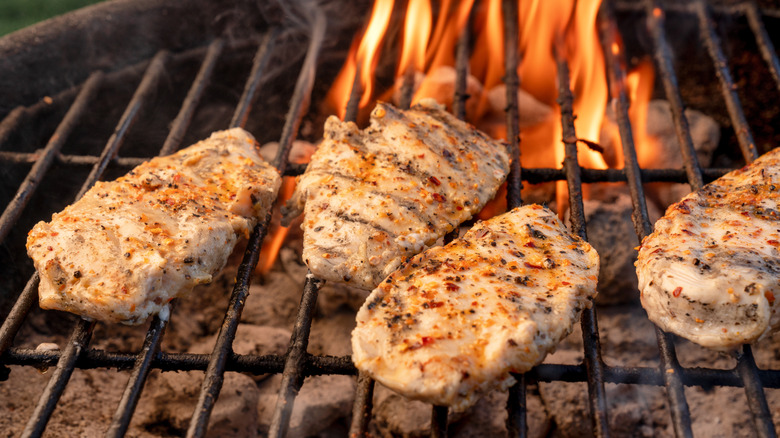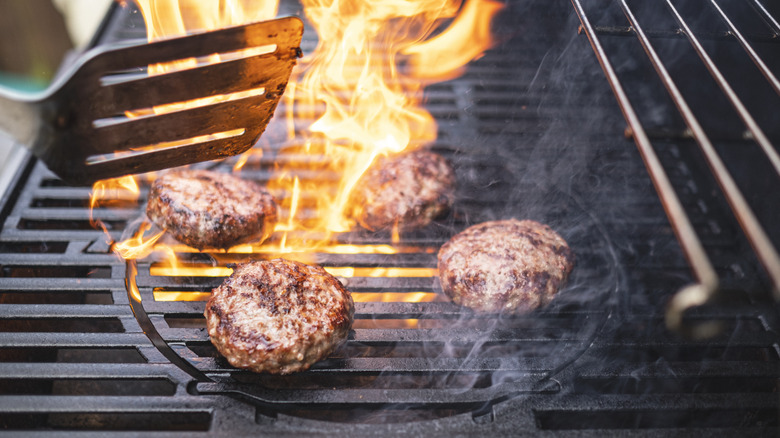Why It Pays To Use The 2-Zone Grilling Method
Whether you're using gas or charcoal, two-zone grilling can up your barbecue game exponentially. The premise is simple and exactly as it sounds — you divide the surface area of your grill grates into two different regions. One section will be a direct heat source, and the other will be indirect heat. Direct versus indirect just points to the area directly over the flame and the area that's not. Think of the direct heat area as a sizzling hot pan sear and the indirect heat area as a mid-temperature oven. One side is going to give you that char and the other will do the brunt work of cooking the food evenly and all the way through.
It's simple to set up — with a charcoal grill, lump all of the hot coals on one side as the direct heat side. Pop the grates and lid on and let it sit for a few minutes. The half without coals will rise up to a lower temperature. A gas grill is a bit more straightforward: you just need to crank up half the burners to high and leave the other half completely off.
How to cook with two-zone grilling
The two-zone method ups your grilling game in a couple of ways. First and foremost, it leads to more evenly cooked food with a nice charred exterior. The bulk of the cooking time for most foods will be spent on the indirect heat side. Move it over to the direct heat to finish it off with nice browning and beautiful grill marks.
Two-zone grilling also gives you more control as you fire up your food. If something is overcooking, you have the freedom to just scooch it over to the indirect heat side. Think of it like having only one burner lit on your stove — if the pasta water starts to foam over you can quickly move the pot to its neighboring burner, immediately removing the direct heat source. The same goes for dangerous flare-ups caused by drippings that can also turn your food into an ashy hockey puck.
An added bonus is that it's like having an oven outside. You don't have to bother heating up your kitchen on a hot summer day. Whatever you were planning on roasting or baking can go on the indirect side. Just use a grill thermometer to gauge the temperature.

